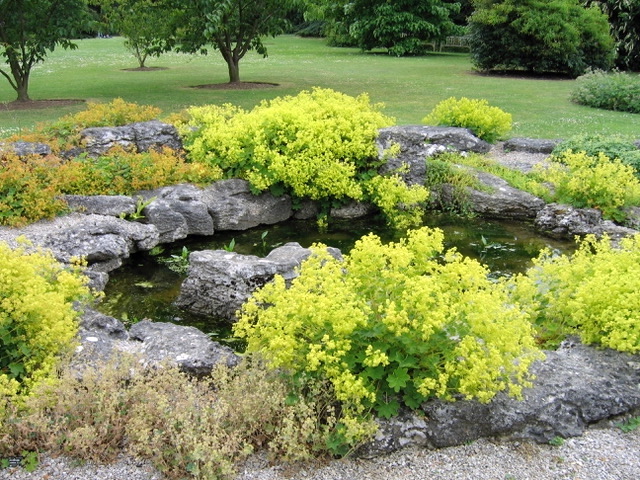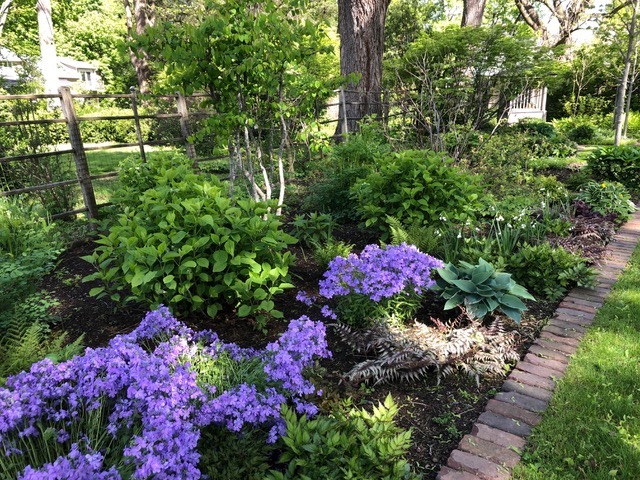Although our gardens are green and lush again some of us still linger in the aftermath of the dark winter of 2021. The months were long and bleak. Cooped up indoors we faced unorganized boxes of old photographs, stacks of unread books, folders of letters going back to the earliest years away from home and continuing until email became the prevalent mode. The winter days were all the same – the morning paper, placing an order with Fresh Direct, too much television news, stabilizing daily FaceTime calls with absent friends and family.
My days were salvaged by a daily drop-in to BBC’s Gardener’s World, now in its 52nd season. It is a weekly hour-long immersion in Monty Don’s garden, plus excursions to others -- a bonanza of pots, seed trays, cloches, greenhouses, cold frames. The 2020 season was online in its entirety and each episode was redolent with the pain of last year, and how best to cope. The film crew vanished, leaving equipment behind for Monty Don to figure out how to film himself, his garden and his dogs. His on-camera regulars filmed themselves visiting an array of gardens tiny to grand, allotments to estates.
The Pile Of Letters
 |
| Monty Don In His Garden |
Viewers were requested to film their own gardens and send them in. The children were the most endearing, “making do” with whatever was at hand as supplies in England were hard to come by.
In England, of course “making do” means gardening with whatever fertilizer you have even if it means tomato fertilizer for roses, gardening no matter how small the space, or how little access you may have to an actual garden. There were container gardens on tiny scraps of concrete, plants in paper cups, single species gardens of exclusively iris, the snowdrop collector; the peonies-only gardener, the citybound pavement gardener who grows only tulips between his front door and the street. This singular focus is virtually unknown in America, whose gardeners appear bloodless next to the British.
Single-focus gardens in the United Kingdom are the backbone of the National Collections. The idea may appear elite to an outsider, but the process is more democratic than it seems, and anybody can start one. Collections of specific genera can be found in allotments, small gardens, and grand gardens both public and private.
The first step in the designation is the proposal form, followed by a full application. There are conservation teams and local coordinators to help an applicant with the process. It can be a full collection, or merely a statement of intent. A Plant Conservation Committee provides advice and guidance.
The Collections are part of the National Council for the Conservation of Plants and Gardens, started in 1978, and now renamed Plant Heritage. There are 95,000 plants available to see across 650 collections. The effort can be traced back to the National Trust’s wartime scheme to assess the 200 best country houses with the intent of saving them from neglect or disappearance. The Gardens Committee was an offshoot of this effort.

Snowdrops in a National Collection
Several years ago I visited the national collections in the Cambridge University Botanical Garden. Opened in 1846, the idea behind the garden was shaped by John Henslow, widely remembered as the teacher of Charles Darwin. Henslow wanted a scientific garden to facilitate the teaching and research about plants as organisms worthy of study in their own right, rather than the Garden’s earlier incarnation for the sole study of medicinal plants.
Henslow’s early research on variation and hybridization in the nature of species can be seen today in the design of the garden. The collection of Pinus nigra (Black pine) variants and all their subspecies are grouped at one end of the garden so that distinctions may be clearly seen one against the other.
The plantings satisfy both science and aesthetics. The rock garden resembles an outcrop on a hillside, using 900 tons of limestone to achieve the desired effect. A dense planting of evergreen hedges in the garden gives the illusion of a continuing hillside slope, a triumph of design in the flat land of this garden.
There are nine national collections in the Cambridge Botanical Garden. The Alchemilla collection is fascinating for those of us in America who have only seen the mollis (Ladies mantle). The Geranium collection is equally rich for those who know only the various sanguineum (Cranesbill). While several geranium varieties are now available in the marketplace, we still have only the sole Alchemilla mollis.
 |
| Alchemilla in the Cambridge Botanical Garden |
The National Garden Scheme (NSG), started in 1927, lists 3,600 gardens open to the public with fees collected to benefit charities in England and Wales. The beneficiaries are NSG’s health and nursing charities, gardens in specialized hospitals and funds to support gardeners-in-training. As you can see by the numbers, the gardens are widely available and wildly democratic. If you plan to visit pick up a copy of the Yellow Book, more formally known as The Gardens Visitors Handbook. It will tell you what is open and when, how to get there, whether there are plant sales and/or food service. If you want to avoid driving on the wrong side of the road, travel by rail and pick up a cab at the station stop to take you to the garden.
 |
| The Yellow Book |
In theory, I could happily spend the entire season in the UK, traipsing from garden to garden. In practice, it is asking too much of me to miss a season at home in my own garden. I tend to visit gardens in the off-season seeing only the bare bones, which is the best indicator of the underlying design. If design and practice are not your great loves then by all means go early in the growing season – and often.
 |
| Mid-May in my Garden |
